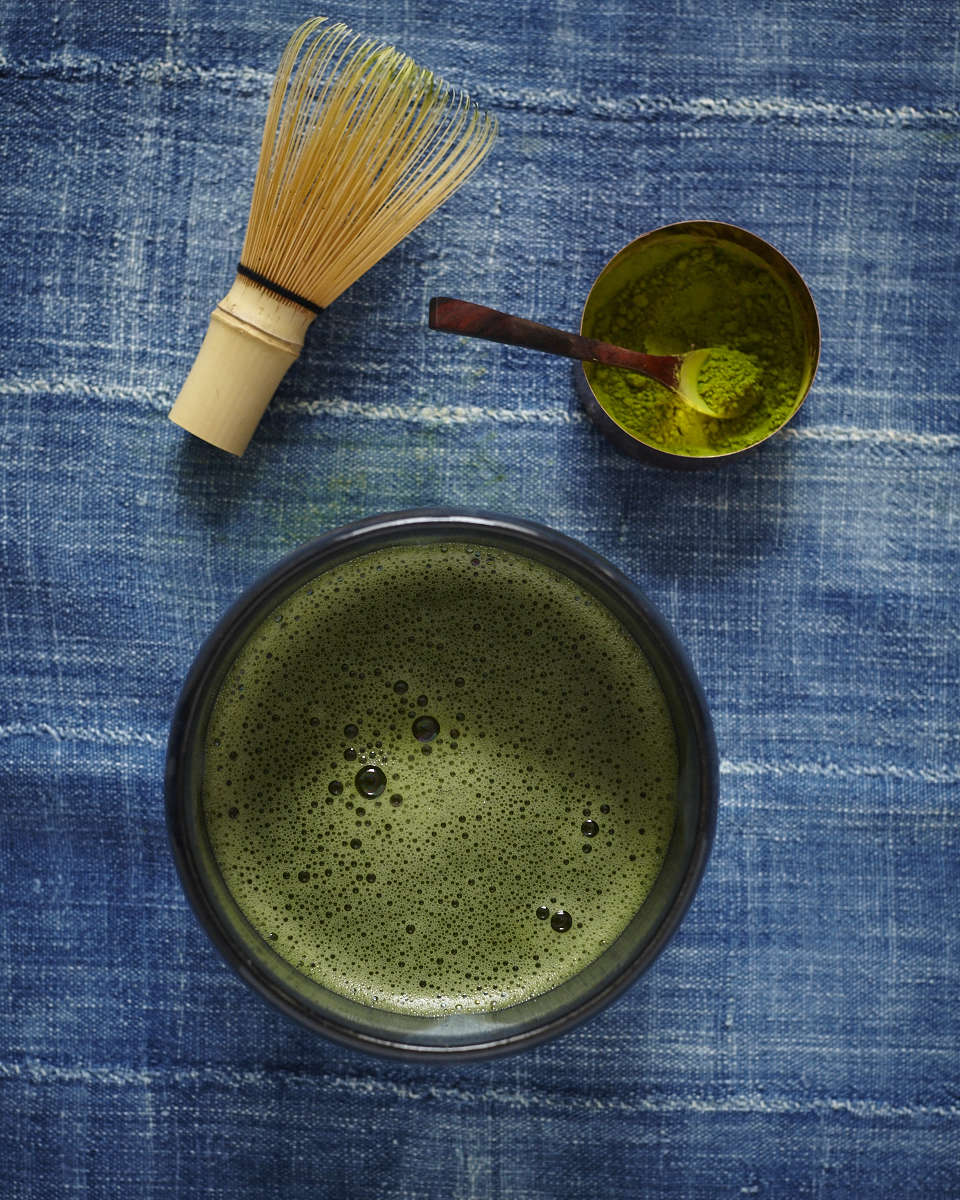Are you craving a calming, healthful cup of matcha to get you through the depths of winter? This week tea experts Emily Erb and Anna Morton of Leaves and Flowers gave us tips on how to find the freshest tea leaves—and revealed their favorite matcha recipe for making a perfect cup.
(N.B.: Go to Remodelista to see more ideas in Expert Advice: 9 Tips for an Everyday Tea Ritual.)
Read on for everything you need to know about how to make the best matcha tea:
Photography by Daniel Dent except where noted.

Above: When it comes to matcha, “the greener, the better.”
What is matcha?
Matcha is made of processed green tea leaves that have been finely ground into a powder. The finest varieties come from Japan, particularly the southern provinces.
To make matcha, green tea plants (Camellia sinensis) are kept in shade for several weeks before harvest to increase chlorophyll levels, which turns the leaves a deeper shade of green, resulting in matcha’s vibrant color. Amino acids produced during this process give the tea sweetness and a stimulating effect. Leaves are then dried, sorted, and de-veined to create Tencha green tea before being stone-ground into matcha. (Traditionally, granite is used to grind the leaves as it preserves nutritional content.)
Above: A 20-gram canister of Ceremonial Grade Organic Matcha grown in Uji Prefecture is $36 from Leaves and Flowers.
How do I buy the best matcha?
There are a few classes of matcha, including “ceremonial grade” (a high-quality matcha meant purely for drinking); “cooking grade” matcha (a lower quality, bitter version suitable for baking or mixing with sweeteners), and the middle-of-the-road “premium grade.”
“There are few things to remember when sourcing matcha,” Erb and Morton say. Here’s their cheat sheet:
Origin
“Take note of where the matcha is coming from,” Erb and Morton say. “High quality matcha generally comes from Japan. The region that is considered to produce the best is Uji, near Kyoto.”
Price
Don’t skimp, Morton advises. “Like many things in life, you get what you pay for.” Rule of thumb: Don’t expect a 20-30 gram tin of ceremonial grade matcha to cost under $20.
Color
When it comes to matcha’s hue, Erb and Morton say, “The greener, the better! If it looks dull or yellowish, the quality is poor and/or it hasn’t been stored properly.”

Above: A few of the basic implements needed for a matcha ritual: a matcha whisk, tea canister, tea scoop, and small bowl.
Texture
“The fineness of the tea powder can tell you a lot about the grade,” Erb and Morton say. “A high quality matcha is very fine and silky, similar to baby powder.”
Looking for a no-fail matcha? Erb and Morton suggest sourcing matcha tea from Ippodo, Breakaway Matcha, and Kettl.
Flavor
How should matcha taste? “A high grade matcha will be sweet, creamy, and vegetal, with that characteristic umami flavor.” Like any kind of tea, experiment with types until you find a version you like.

Above: Unlike brewed teas, matcha powder is whisked with water into a suspension.
How do you prepare matcha?
It’s unlike other types of tea in that whole ground tea leaves are whisked into a suspension and then consumed, rather than infusing them in water before discarding them. Matcha can be brewed in two methods: usucha (thin tea, the most common) and koicha (thick tea), made with half the amount of water and twice the amount of matcha.
The mindful preparation of matcha and the materials used are as important as drinking it. “We learned this preparation from a Japanese friend who spent some time educating us about matcha and the art of Japanese tea ceremony,” Erb and Morton say. A few key materials: a tea canister (for storage), a fine sieve, a specialized matcha tea scoop (Leaves and Flowers sells a bamboo Matcha Scoop for $12), a teapot, a matcha whisk (a 120-tine Matcha Whisk is $28 via Leaves and Flowers), and small cups or bowls for serving.
Matcha Recipe:
- First, sift the matcha through a fine sieve. This will help the powder blend more evenly into the water.
- With a matcha scoop, measure one to two teaspoons (two scoops) into a matcha bowl.
- Pour two ounces hot (but not boiling) into the bowl.
- With a chasen (matcha whisk), whisk quickly in a W motion until a creamy green froth starts to form on the surface.
- Slowly lift the whisk from the matcha and set aside. Enjoy.

Above: A bowl of matcha, ready to sip.
For more tips for tea rituals, see Expert Advice: 9 Tips for an Everyday Tea Ritual. And for more healing teas, see our posts:
















Have a Question or Comment About This Post?
Join the conversation (2)